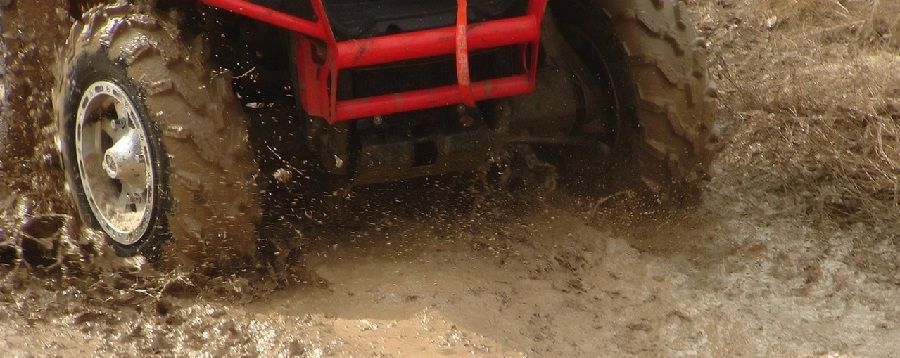
SAFETY TIP: All-Terrain Vehicle (ATV) Safety On the Job

ATVs were first introduced in the U.S. for agricultural use in the early 1980s. Since then, ATVs have become valuable assets in many workplaces. ATVs are commonly used by workers in construction, emergency medical response, search and rescue, land management and surveying, pipeline maintenance, farming and forestry. But 300-400 people die while riding ATVs every year and thousands more are injured, so it’s important to know the hazards associated with ATVs and how to operate them safely.
ATVs have a high center of gravity and a relatively narrow wheelbase, which can make them challenging to operate safely. Here are some tips from NIOSH on precautions employers and employees can take to prevent injury and use ATVs safely in the workplace:
Employers:
- Provide hands-on training by a qualified ATV instructor
- Provide an ATV-approved helmet and eye-protection
- Encourage employees to wear relevant PPE and protective clothing, such as gloves, long shirts and pants, and work boots
- Identify and mark hazards such as excavations, trenches and guy wires so they can be seen and avoided
- Establish and enforce operating policies that follow manufacturers’ terrain guidelines, hauling and towing capacities and passenger restrictions
- Follow manufacturer’s maintenance recommendations
- Post trail safety signs to identify sharp turns, narrow trails and other hazards along commonly used ATV routes
Employees / Riders:
- Always wear a DOT-approved helmet and eye protection. Studies show that ATV riders who do not wear a helmet are more likely to receive significant injuries to the face, neck and head, including traumatic brain injury.
- Participate in hands-on training on safe ATV handling and operation
- Wear protective clothing appropriate to your work: long shirt, pants, gloves, boots, etc.
- Conduct a pre-ride inspection of tires, brakes, headlights, etc.
- Understand how trailers, implements and attachments can affect stability and handling
- Ensure cargo is balanced, secured and loaded only on approved racks
- Never exceed manufacturer’s hauling, towing or weight limits
- Follow posted hazard warnings, and watch for hazards such as excavations, guy wires, ruts and rocks
- Drive at safe speeds for weather and terrain conditions
- Avoid quick turns while operating an ATV on a hill
ATV Safety Resources:
Safe Manitoba has produced a 40-page booklet on ATV safety for agricultural workers. It provides in-depth information on ATVs, including selecting an appropriate model, special features, protective gear, inspections, and an extensive section on operation. It’s a great guide for anyone using or thinking about using ATVs in the workplace.
- Download an ATV Safety Fact Sheet from NIOSH here (pdf).
- Download the ATV Safety for Agricultural Workers booklet here (pdf).
- Browse Trail Safety signs at ComplianceSigns.com.
ATV Symbol Sign
All Terrain Vehicles are used in all sorts of fields, but are still potentially dangerous if not handled properly. Following the proper safety guidelines can help to keep everyone in any work site safe.

